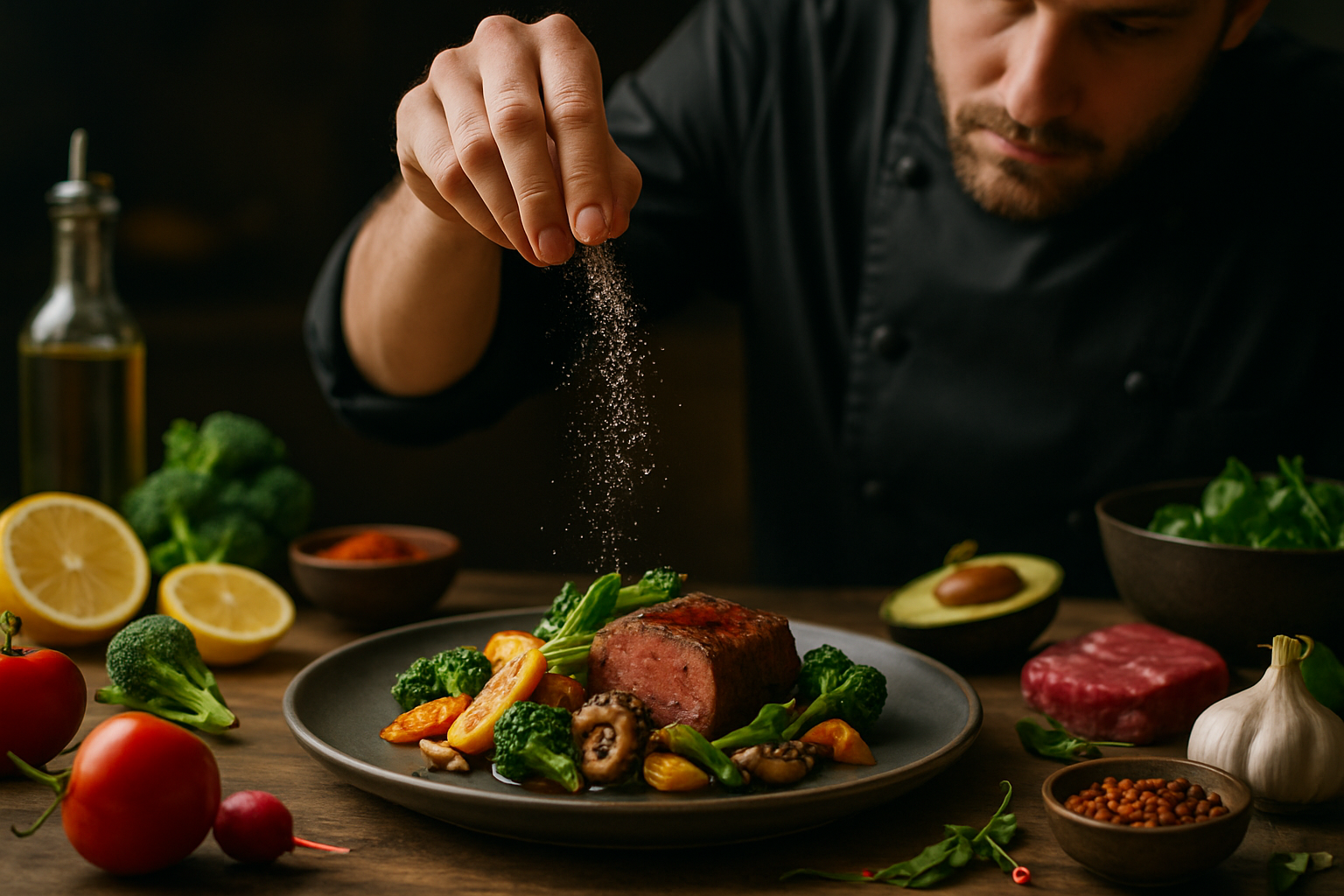Culinary Alchemy: Transforming Humble Ingredients into Gourmet Delights
Discover the art of elevating everyday ingredients into extraordinary culinary creations. This journey through culinary alchemy will inspire you to reimagine your pantry staples, transforming them into restaurant-worthy dishes that will impress even the most discerning palates. Get ready to unlock the hidden potential of common ingredients and revolutionize your home cooking experience.

Unlocking Flavor Potential through Technique
One of the most powerful tools in a chef’s arsenal for transforming ingredients is mastery of cooking techniques. Techniques like caramelization, braising, and fermentation can completely alter the flavor profile and texture of foods. For instance, consider the humble onion. When slowly caramelized, its sharp, pungent flavor mellows into a rich, sweet complexity that can elevate everything from soups to tarts. Similarly, tough cuts of meat that might be unpalatable when quickly cooked can become tender and flavorful through long, slow braising. Even simple roasting can dramatically change the character of vegetables, concentrating their flavors and adding delightful crispy textures. By understanding and applying these techniques, home cooks can unlock new dimensions of flavor in everyday ingredients, turning ordinary meals into extraordinary culinary experiences.
The Art of Unexpected Pairings
Another key aspect of culinary alchemy is the art of unexpected pairings. By combining ingredients in novel ways, you can create dishes that are greater than the sum of their parts. This doesn’t always mean complex or exotic combinations; sometimes, the most surprising and delightful pairings come from ingredients you already have in your kitchen. For example, the addition of a pinch of salt to chocolate or caramel can enhance sweetness while adding depth and complexity. Similarly, pairing fruit with savory dishes – like figs with prosciutto or peaches with grilled chicken – can create a beautiful balance of flavors. Even familiar pairings can be reimagined: try adding a splash of balsamic vinegar to strawberries for a sophisticated twist on a classic dessert. The key is to be open to experimentation and to trust your palate. With practice, you’ll develop an intuition for flavors that complement and enhance each other in unexpected ways.
Texture: The Often Overlooked Element
While flavor often takes center stage in culinary discussions, texture plays a crucial role in transforming humble ingredients into gourmet creations. The contrast between crispy and soft, smooth and crunchy, or creamy and chewy can elevate a dish from good to unforgettable. Consider the simple potato: when mashed, it becomes a comforting side dish, but when transformed into a crispy golden rösti or a delicate, layered gratin, it becomes the star of the meal. Similarly, introducing textural elements like toasted nuts, crispy herbs, or a velvety sauce can add depth and interest to otherwise simple dishes. Even techniques like emulsification can transform basic ingredients into luxurious textures, as seen in the creation of silky mayonnaise from oil and egg yolks. By paying attention to texture and incorporating a variety of mouthfeels into your cooking, you can create more complex and satisfying culinary experiences from everyday ingredients.
Presentation: The Final Touch of Transformation
The final step in transforming humble ingredients into gourmet delights lies in presentation. How a dish is plated can dramatically alter the diner’s perception and enjoyment of the food. Even the simplest ingredients can be made to look elegant and appetizing with thoughtful arrangement and garnishing. Consider the classic French ratatouille: when traditionally prepared, it’s a rustic vegetable stew, but when the vegetables are thinly sliced and arranged in a spiral, it becomes a visually stunning centerpiece. Similarly, a simple soup can be elevated with a swirl of cream, a sprinkle of fresh herbs, or a few drops of flavored oil. Even the choice of serving vessel can impact the perception of a dish – serving a homey stew in an elegant bowl or on a slate tile can instantly give it a more sophisticated feel. Remember, we eat with our eyes first, so taking the time to present your creations beautifully is the final step in your culinary alchemy, turning your humble ingredients into true gourmet experiences.
Culinary Alchemy Tips & Facts
• Use high heat to caramelize vegetables, bringing out their natural sweetness
• Experiment with infusing oils and vinegars with herbs and spices for unique flavors
• Try sous vide cooking to transform tough cuts of meat into tender, flavorful dishes
• Incorporate umami-rich ingredients like miso or nutritional yeast to boost savory flavors
• Use acid (lemon juice, vinegar) to brighten and balance rich dishes
• Explore molecular gastronomy techniques like spherification to create unique textures
• Learn to make compound butters to add instant flavor to simple dishes
• Use a smoking gun to add depth and complexity to unexpected ingredients like cocktails or desserts
In conclusion, culinary alchemy is about more than just cooking – it’s about seeing the potential in every ingredient and having the creativity and skill to bring that potential to life. By mastering techniques, experimenting with flavor combinations, playing with textures, and focusing on presentation, you can transform even the most humble ingredients into dishes worthy of a gourmet restaurant. Remember, great cooking is as much about imagination and willingness to experiment as it is about following recipes. So, the next time you look at your pantry staples, don’t just see what they are – envision what they could become. With practice and passion, you’ll soon be creating culinary gold from the most unexpected sources.





